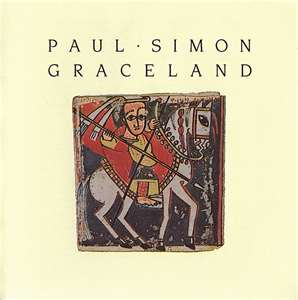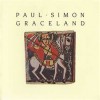 Originally published by L.S. Media. June 9th 2012.
Originally published by L.S. Media. June 9th 2012.
There can be little doubt that Paul Simon’s 1986 album Graceland is one of the most important that the former folk singer ever recorded.
Not only did it give a new lease of life to a flagging career after the not well received Hearts and Bones but almost single handed introduced the wider world to the music of South Africa that was still being repressed by the apartheid regime in power at the time.
Graceland was recorded between October 1985 and June 1986 and upon its release stormed to the top of the charts in the U.K. even staying in the album chart well into 1987, and became a top three hit for the singer-songwriter in his home country of the United States. Its eclectic fusion of memorable rock-created riffs, African roots music, a cappella, a horn section to die for, pop and mbaqanga. It gave the music world the unbelievable ability of South African musicians including Ladysmith Black Mambazo and a true global appreciation for their tremendous music.
For anyone who caught any of the songs from the album as it resounded round the world on thousands of radio stations or via the superb video for the single You Can Call Me Al on M.T.V., the first thought that would have come to mind was how does Paul Simon manage to constantly reinvent himself musically whilst retaining that incredible song writing appeal. The second would certainly have been, how on earth does he bring this incredible wall of sound together? Only later and due to bad publicity and some negative accusations from other musicians and politicians that he had broken the cultural boycott imposed by the rest of the world on the apartheid regime would fans of the album wondered what really had happened and who was right.
A 25th anniversary album is not the time to delve into that argument, however by showcasing the incredible music that is available in every part of the world, it can only be hoped that time has healed those wounds and people now see how genuinely important it was to bring these musicians to the forefront and show the world that everyone’s art is needed to gain an understanding and to bring down corrupt and senseless regimes.
The album itself is possibly the high water mark for Paul Simon as a solo artist, he managed to sell over 14 million copies of the album, making it the most commercially successful album in his career and even Rolling Stone Magazine called it, “Lovely, daring and accomplished.” With 25 years under its belt its perhaps time to apprise this by saying that whilst it may be lovely, its more in keeping with the direction it took the world to say it’s phenomenal, a true testament to man’s ability to conquer oppression through art and critically a spellbinding piece of recording that helped bring down a vile and disgraceful regime that was beginning to show fractures and cracks.
The songs that are contained with the albums framework are songs of outstanding brilliance and simple creativity that it’s doubtful any western musician could ever replicate the enormity and beauty of it.
Even after 25 years, songs such as The Boy in the Bubble, Gumboots, Diamonds on the Soles of Her Shoes and the dramatic Homeless still invoke powerful feelings as you listen to them that they sound as fresh and as pleasing as they did when Paul Simon released the record.
If you are going to have an album that people still talk about with excited, breathless awe after 25 years, then Graceland by Paul Simon surely deserves to be in the top 50 records of all time.
Outstanding!
Ian D. Hall
